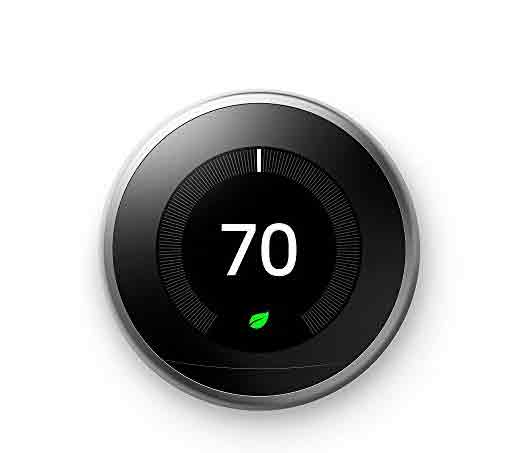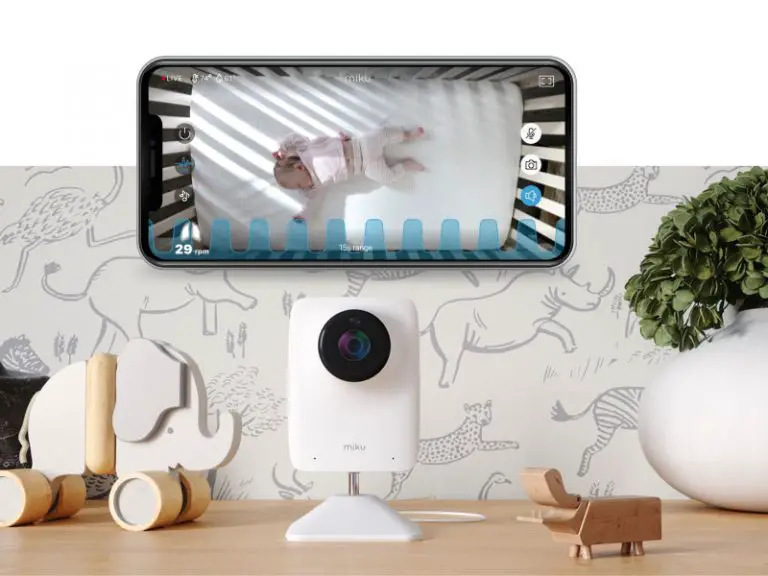Google T3 NestS Nest Learning Thermostat
At the moment, the weather is quite unpredictable due to various factors such as global warming, pollution of the environment and many others. Due to this, you can experience scorching temperatures or freezing temperatures. Many individuals are spending a lot of money on heating costs and cooling costs. Want to save the money you are spending on heating and cooling? Google’s Nest T3007ES learning thermostat is the best option.
Google is an American multinational company that offers various services, both software and hardware to its customers. Google is considered one of the Big Four tech companies in the world. In terms of home appliances, Google has produced various gadgets to make one’s life comfortable. The nest T3007ES learning thermostat has multiple exciting features that will suit your lifestyle. However, you might be wondering what the thermostat is learning?
The thermostat has proficient sensors that will adjust to the temperature you desire when you are at home or away. Nest learning thermostat is among the best smart thermostat for multiple zones. Through this, it creates a custom temperature to save energy and keep you comfortable. When you purchase the device, you enjoy various services without additional fees. In this article, I’ll be reviewing the multiple specifications of the thermostat in terms of design, features, installation and apps. Is the nest T3007ES learning thermostat for your household? Read ahead to find out.
What are the cool features with the Nest T3007ES learning thermostat?
The thermostat has a sleek, thin modern design that will blend with your home decor and give a stylish design. Nest learning thermostat has a 24″ color LCD screen with a sharp display. Though it isn’t a touchscreen, you can adjust the thermostat like the traditional thermostat by adjusting the ring. The thermostat has a Far sight feature which lights up when it sees you coming and displays the time or the room temperature.
How to Install The Nest T3007ES learning thermostat

Installation of the Nest learning thermostat is pretty easy to install. In less than 30 minutes, you have to be able to install the thermostat. Everything is correctly labelled and described, thus no need to fuss over the installation of the wires. After installation, ensure you connect it with your WIFI and download the Nest-App on Play store or the App store. Create an account and give it a few details about your abode and it will be up and running in no time.
In terms of energy saving, the device is efficient as its ENERGY STAR certified. The thermostat works with low-voltage, 24-volts systems. It is vital to make sure that your home is compatible with your abode before purchasing it. Operating under low voltage it won’t work with wired remote sensors, some micro-controller-based systems and more.
The Nest learning thermostat doesn’t require a c-wire, which lets the 24-voltage connect to the device. “Nest thermostats can pay for itself in under two years or less” as said by Nest: therefore, you can save 10% to 12% on heating bills and 15% on cooling bills.
Nest offers to its existing customers, Nest Temperature Sensor. Instead of buying many thermostats, you can get a sensor for the rooms you want. The sensors send information to the thermostat to monitor the temperature. Not only does it detect temperature but also it detects humidity as it is a crucial factor that may affect the warmness of a room.
- The thermostat saves a lot of energy and monthly costs
- The thermostat has a rechargeable battery
- It doesn’t require a c-wire
- Easy to install
- It comes with Alexa, Google Assistant and many more
- The display isn’t touch-enabled
What makes Nest learning thermostat more unique?
It’s known that the primary function is to detect temperature changes, and you can adjust to provide a conducive environment. The advancement of the technologies, everything has been created to be “smart”. The Nest T3007ES learning thermostat has a proficient processor that can detect various factors that contribute to the temperature changes.
The thermostat can sense the humidity in the room, which affects how warm a room feels. It can sense motion; hence, when you walk past it, and it adjusts accordingly. Also, it has presence detection, with the help of body heat energy, it can determine if one is in the room and adjust. It is useful since when you leave the house, it doesn’t heat or cool the home without any purpose. The device can dim or brighten the light in the room, thus saving power.
Nest learning thermostat also has the Nest leaf. You will see a leaf when you set the right temperatures that save energy; hence, the device guides you in the right path. Nest learning thermostat works hand in hand with Nest Protect. If it detects carbon monoxide gas, it can tell the Nest thermostat to turn off the furnace since it is a common source of CO leaks.
Recommended Article:
The Best Honeywell Multi-Zone Thermostat Reviews|
Ecobee 4 Smart Thermostat With Built-In Alexa Reviews
The Best Cell Phone Booster for Verizon
Is it worth buying Nest learning thermostat’s additional accessories?
Indeed, buying other accessories might not be pocket-friendly at times, but it is worth it. Instead of buying for each room a thermostat, you can buy the Nest Room Sensors. It is the best option and money-saving. are you worried that it won’t work just like the thermostat?
No need to fuss about it since the sensors are proficient and can relay the information required by the thermostat to maintain the room temperatures. Also, you can get the Amazon Alexa device for smooth management of the device.
Bottom Line
Choosing a proficient thermostat can be strenuous with the vast reviews of the thermostat; hence, you end up stranded. Nest learning thermostat is the best option if you are on a tight budget. The Nest thermostat has various features which will suit your lifestyle with much ease.
Being an Energy-certified star product, you save much energy and power bills annually. Lastly, ensure that you check if the Nest learning thermostat is compatible with your home to avoid any inconveniences. Check out the device requirements at Google Nest help for more information.







